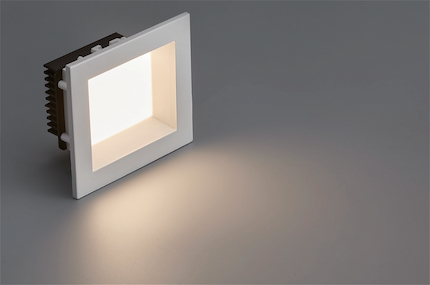Jan 06, 2024
In The World Of Commercial Lighting, Led Technology Has Gained Significant Popularity Due To Its Energy Efficiency, Long Lifespan, And Versatility. One Key Aspect To Consider When Selecting Led Lights For Commercial Applications Is The Luminous Flux. In This Article, We Will Delve Into The Concept Of Luminous Flux, Its Significance, And How To Choose The Appropriate Luminous Flux For Different Commercial Lighting Requirements.
Understanding Luminous Flux:
Luminous Flux Is a Measure Of The Total Amount Of Visible Light Emitted By a Light Source. It Is Typically Expressed In Lumens (Lm). Unlike Wattage, Which Indicates Power Consumption, Luminous Flux Provides a More Accurate Representation Of The Light Output And Brightness Of An Led Light Source.
Example:
To Better Understand Luminous Flux, Let Us Consider a Scenario Where You Need To Illuminate a Large Office Space. The Recommended Illuminance Level For Such An Environment Is Typically Around 500 Lux. By Selecting Led Lights With a Higher Luminous Flux, You Can Achieve This Desired Level Of Brightness. For Instance, If a Specific Led Downlight Has a Luminous Flux Of 2000 Lumens, You Might Need a Total Of Four Luminaires To Adequately Illuminate The Office Area.
Choosing Suitable Luminous Flux For Commercial Lighting:
1. Identify The Lighting Requirements: Assess The Specific Needs Of The Commercial Space. Consider Factors Such As The Size Of The Area, Task Requirements, And Desired Ambiance. Different Areas Within The Building May Require Different Levels Of Illumination.
2. Determine The Required Illuminance: Determine The Appropriate Illuminance Level For Each Area Based On Industry Standards Or Specific Needs. For Example, Task-Oriented Areas Like Workstations May Require Higher Illuminance Levels Compared To Corridors Or Break Rooms.
3. Calculate The Required Luminous Flux: Use Lighting Design Software Or Consult With a Lighting Professional To Calculate The Necessary Luminous Flux For Each Area. This Calculation Takes Into Account The Desired Illuminance, Room Dimensions, And Other Factors Such As Reflectance And Color Rendering Requirements.
4. Consider Energy Efficiency: While It May Be Tempting To Choose Led Lights With The Highest Possible Luminous Flux, It Is Essential To Consider Energy Efficiency And Power Consumption. Opt For Led Lights With An Appropriate Balance Between Luminous Flux And Wattage To Ensure Optimal Energy Savings.
5. Understand The Application Requirements: Various Commercial Spaces Have Specific Lighting Needs. For Instance, In Retail Environments Where Product Displays Are Crucial, Higher Luminous Flux May Be Required To Showcase Merchandise Effectively. On The Other Hand, In a Restaurant Or Hospitality Setting, a Softer, More Atmospheric Lighting Ambiance May Be Desired.
In The Realm Of Commercial Lighting, Understanding The Concept Of Luminous Flux Is Essential For Selecting The Right Led Lights. By Carefully Considering The Lighting Requirements, Calculating The Required Illuminance, And Balancing Energy Efficiency, Businesses Can Choose The Appropriate Luminous Flux To Achieve Optimal Lighting Outcomes. Consulting With Lighting Professionals And Manufacturers Can Further Assist In Selecting The Most Suitable Led Lights For Various Commercial Applications, Ensuring Both Functionality And Aesthetic Appeal.
